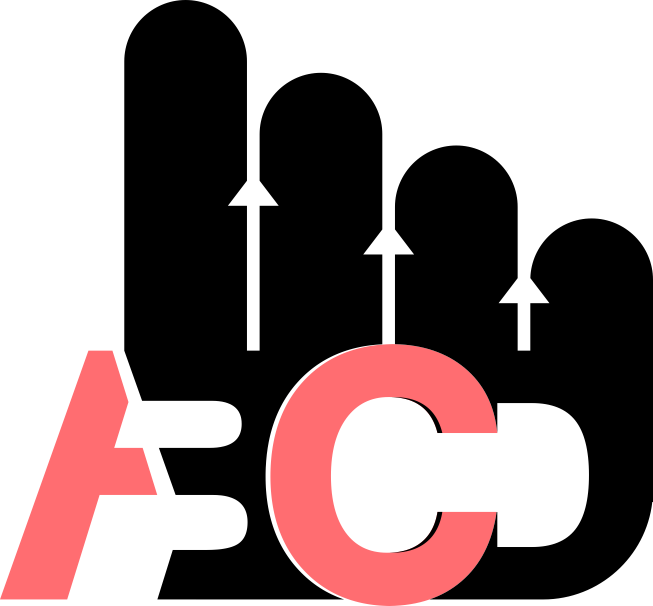Evaluation of Thyroid Dysfunction in Type 2 DM in Duhok Governorate
DOI:
https://doi.org/10.56056/amj.2015.03Keywords:
Diabetes, ThyroidAbstract
Background and ObjectivesThyroid diseases and Diabetes are the most common endocrinal disorders seen in clinical practice. As a result, it is common for an individual to be affected by both thyroid diseases and diabetes. Most studies show an increased incidence of thyroid dysfunction in type 2 DM than in the general population. The unrecognized thyroid dysfunction not only worsens metabolic control but also impedes the management of diabetes. The aim of this study is to estimate the frequency and characteristics of thyroid dysfunction among type-2 diabetic patients in Duhok Governorate.
Patients and MethodsThe study population consisted of a total 101 randomly sample Type II diabetic patients from 1st January to 30th November 2013 at Duhok Diabetic center. The patients were interviewed and examined, and their blood samples were taken for lipid profiles, Thyroid function tests, and at least 2 fasting blood sugars were checked.
ResultsThe study population consisted of a total of 101 Type II diabetic patients (33 males and 68 females) with a mean age of 53.73± 9.07 and 51.97± 11.93respectively. 74 out of 101 patients were euthyroid. The remaining 27 patients had thyroid dysfunction. Subclinical hypothyroid is commonest 14.9% followed by overt hypothyroidism constituting 7.9%.
ConclusionsThyroid dysfunction is common among Type 2 DM and it is more common in females than males. Of thyroid dysfunction, subclinical hypothyroidism was the most common type followed by overt hypothyroidism. Dyslipidemia was significantly higher in the hypothyroid group than in the euthyroid group specifically atherogenic LDL. Glycemic control was poor significantly in hypothyroid and hyperthyroid groups than in euthyroid so unidentified thyroid dysfunction could negatively impact glycemic control.
Downloads
References
Shabbir B, Qadir H, Shafi F, Mahboob F. Thyroid Dysfunction in Diabetes Mellitus. Pakistan Journal of Medical and Health Sciences 2012;6(1).
Al-Wazzan H, al e. Prevalence and associated factors of thyroid Dysfunction among Type 2 diabetic patients.
Alexandria Journal of Medicine 2010;46.2:141-148.
Ghosh S, Collier A. Epidemiology in type 2 DM. Churchill’s Pocketbook of Diabetes, Elsevier Health Sciences. 2nd ed,Edinburgh,2012p25.
Holt R, Hanley N. Epidemiology of type 2 DM and Thyroid gland. Essentail Endocrinology and Diabetes. 6 ed2012. p 286 and p174.
Vij V. Evaluation Of Thyroid Dysfunction Among Type II Diabetic Patients. International Journal of Phar- macy and Biological Sciences (IJPBS) 2012;2(4):150- 155.
Papazafiropoulou A, Sotiropoulos A, Kokolaki A, Kardara M, Stamataki P, S. P. Prevalence of Thy- roid Dysfunction Among Greek Type 2 Diabetic Pa- tients Attending an Outpatient Clinic. J Clin Med Res 2010;2(2):75–78.
Wu P, al. e. Thyroid Disease and Diabetes. CLINI- CAL DIABETES 2000;18.
Baskin HJ. AACE guidelines for clinical practice for evaluation and treatment of hyperthyroidism and hypothyroidism. ENDOCRINE PRACTICE 2002;8 457-469.
Ladenson PW, Singer PA, Ain KB. American thyroid association guidelines for detection of thyroid dysfunc- tion. Archives of Internal Medicine 2000;160:1573- 1575.
C. W. The Relationship between Type 2 Diabetes Mellitus and Related Thyroid Diseases. Journal of Dia- betes Research 2013:47-51.
Association BT. 2006 The UK guidelines for the use of thyroid function tests. The Association for Clin- ical Biochemistry.
Swamy, Kumar, Srinivasa, Manjunath, al. e. Eval- uation of hypothyroidism as a complication in Type 2 Diabetes Mellitus. Biomedical Research 2012;23 (2):170-172.
Brenta G. Diabetes and thyroid disorders. British Journal of Diabetes & Vascular Disease 2010;10:172- 177.
Raboudi N, Arem R, Jones RH. Fasting and postab- sorptive hepatic glucose and insulin metabolism in hy- perthyroidism. Am J Physiol 1989;256:159-66.
Weinstein SP, O’Boyle E, Fisher M, Haber RS. Reg- ulation of GlUT2 glucose transporter expression in liver by thyroid hormone: evidence for hormonal regulation of the hepatic glucose transport system. Endocrinology 1994;135:649-54.
Viguerie N, Millet l, Avizou S. Regulation of hu- man adipocyte gene expression by thyroid hormone. J Clin Endocrinol Metab 2002;87:630-4.
Clément K, Viguerie N, Diehn M. In vivo regula- tion of human skeletal muscle gene expression by thy- roid hormone. Genome Res 2002;12:281-91.
Potenza M, Via MA, Yanagisawa RT. Excess thy- roid hormone and carbohydrate metabolism. Endocr Pract 2009;15:254-62.
S. l, Bailey CJ. Thyroid hormones, gonadal and adrenocortical steroids and the function of the islets of langerhans. Endocr Rev 1984;5:411-34.
Ortega E, Koska J, Pannacciulli N. Free triiodothy- ronine plasma concentrations are positively associated with insulin secretion in euthy-roid individuals. Eur J Endocrinol 2008;158:217-21.
Ximenes HM, lortz S, Jörns A, lenzen S. Triiodothy- ronine (T3) mediated toxicity and induction of apopto- sis in insulin-producing INS-1 cells. Life Sci;80:2045- 50.
Okajima F, Ui M. Metabolism of glucose in hyper and hypothyroid rats in vivo. Glucose turnover values and futile cycle activities obtained with 14 C and 3H labelled glucose. Biochem J 1979;182:565-75.
McCulloch AJ, Nosadini R, Pernet A. Glucose turn- over and indices of recycling in thyrotoxicosis and pri- mary thyroid failure. Clin Sci 1983;64:41-7.
Maratou E, Hadjidakis DJ, Kollias A. Studies of in- sulin resistance in patients with clinical and subclinical hypothyroidism. Eur J Endocrinol 2009;160:785-90.
Bakker SJ, Maaten JC, Popp-Snijders C. The re- lationship between thyrotropin and low density lipo- protein cholesterol is modified by insulin sensitivity in healthy euthyroid subjects. J Clin Endocrinol Metab 2001;86:1206-11.
Chubb SA, Davis WA, Davis TM. Interactions among thyroid function, insulin sensitivity, and serum
lipid concentrations: The Fremantle Diabetes Study. J Clin Endocrinol Metab 2005;90:5317-20.
Powers AC. Diabetes Mellitus. Harrison’s princi- ple of internal medicine. 18 ed,McGraw-Hill,Newyo- rk,2012,Volume 2 ,Chapter 344.p2970.
Jameson JL, Weetman AP. Disorders of the Thyroid Gland. Harrison’s principle of internal medicine. 18 ed ,McGraw-Hill,Newyork,2012,Volume 2,Chapter 341.p2914-2915.and Konstantinos Tziomalos, Faidon Charsoulis.Endocrine Effects of Tobacco Smoking. Medscape.Clin Endocrinol. 2004;61(6)
Desborough JP. The stress response to trau- ma and surgery. Oxford Journals Medicine BJA 2008;85(1):109-117.
Farwell AP. Sick euthyroid syndrome in the in- tensive care unit. Irwin RS, Rippe JM, eds. Irwin and Rippe’s Intensive Care Medicine. 5th ed2003. p 1205- 1216.
DeGroot LJ. Non-thyroidal illness syndrome is functional central hypothyroidism, and if severe, hor- mone replacement is appropriate in light of present knowledge. J Endocrinol Invest 2003;26:1163-1170.
Adler SM, Wartofsky L. The nonthyroidal ill- ness syndrome. Endocrinol Metab Clin North Am 2007;36:657-672.
Jellinger PS. AACE for management of Dyslipid- emia and prevention of atherosclerosis guidelines. En- docrine practice 2012;18.
American Diabetes Association. Standards of med- ical care in diabetes—2013. Diabetes Care. 2013;36 (suppl 1):S11-S66.
Turner HE, Wass J. Diabetes. Oxford Handbook of Endocrinology and Diabetes. 2nd ed,Oxford university press,Oxford,2009. p 646.
Perros P, McCrimmon RJ, Shaw G, Frier BM. Frequency of thyroid dysfunction in diabetic patients: value of annual screening. DIABETIC MEDICINE 1995;12(7):622-7
Ghazali SM, Abbiyesuku FM. Thyroid dysfunction in type 2 diabetics seen at the University College Hospi- tal, Ibadan, Nigeria. Nig. J. Physiol. Sci. 2010;25:173- 179.
Singh G, al. e. Evaluation of Thyroid Dysfunction Among type 2 diabetic Punjabi Population. Journal’s URL 2011;2(2):03-09.
Demitrost L, Ranabir S. Thyroid dysfunction in type 2 diabetes mellitus. Indian J Endocr Metab
;16:334-5.
Turner HE, Wass JH. Diabetes. Oxford Handbook of Endocrinology and Diabetes. 2nd ed, Oxford univer- sity press,Oxford,2009. p 60.
Alguire PC. Endocrinology and metabolism.Sub- clinical hypothyroidism MKSAP 2012;16:34.
Downloads
Published
Issue
Section
License
Copyright (c) 2022 Sefar Mohamad Al Haj , Bayar Ahmed Qasim

This work is licensed under a Creative Commons Attribution-NonCommercial-ShareAlike 4.0 International License.
The copyright on any article published in AMJ (The Scientific Journal of Kurdistan Higher Council of Medical Specialties )is retained by the author(s) in agreement with the Creative Commons Attribution Non-Commercial ShareAlike License (CC BY-NC-SA 4.0)













